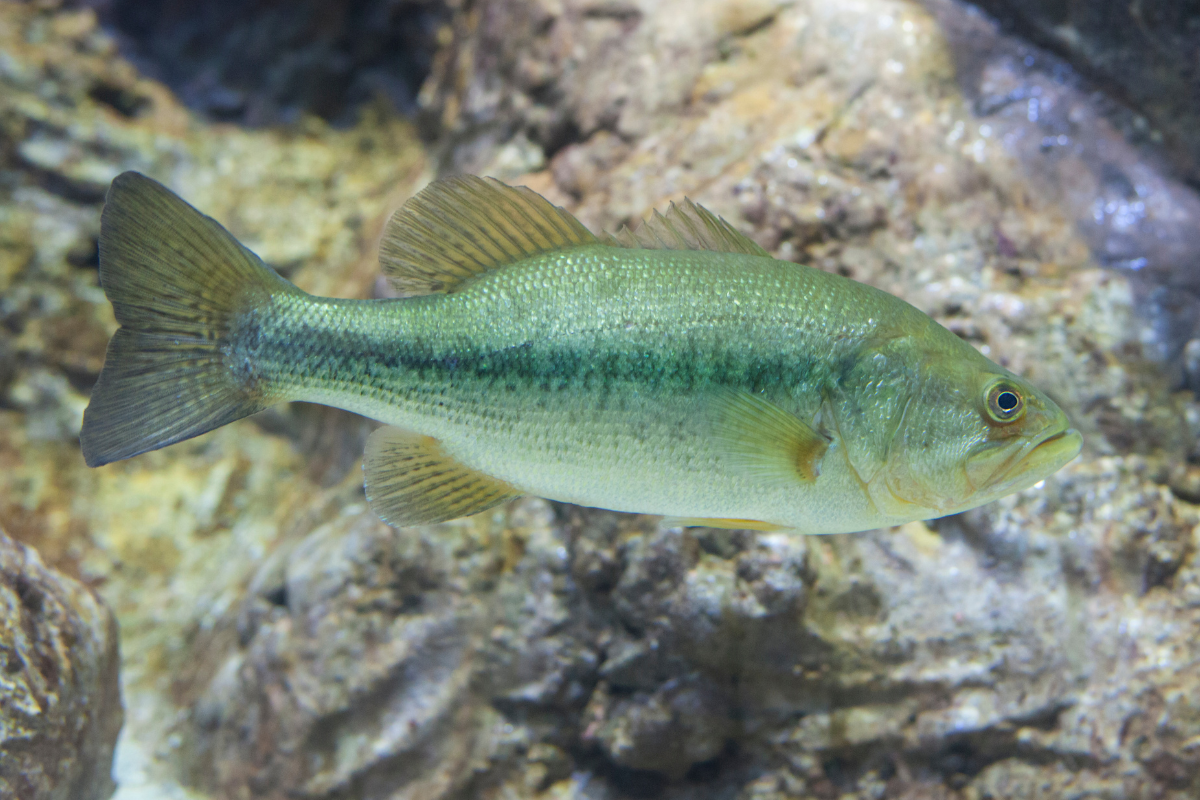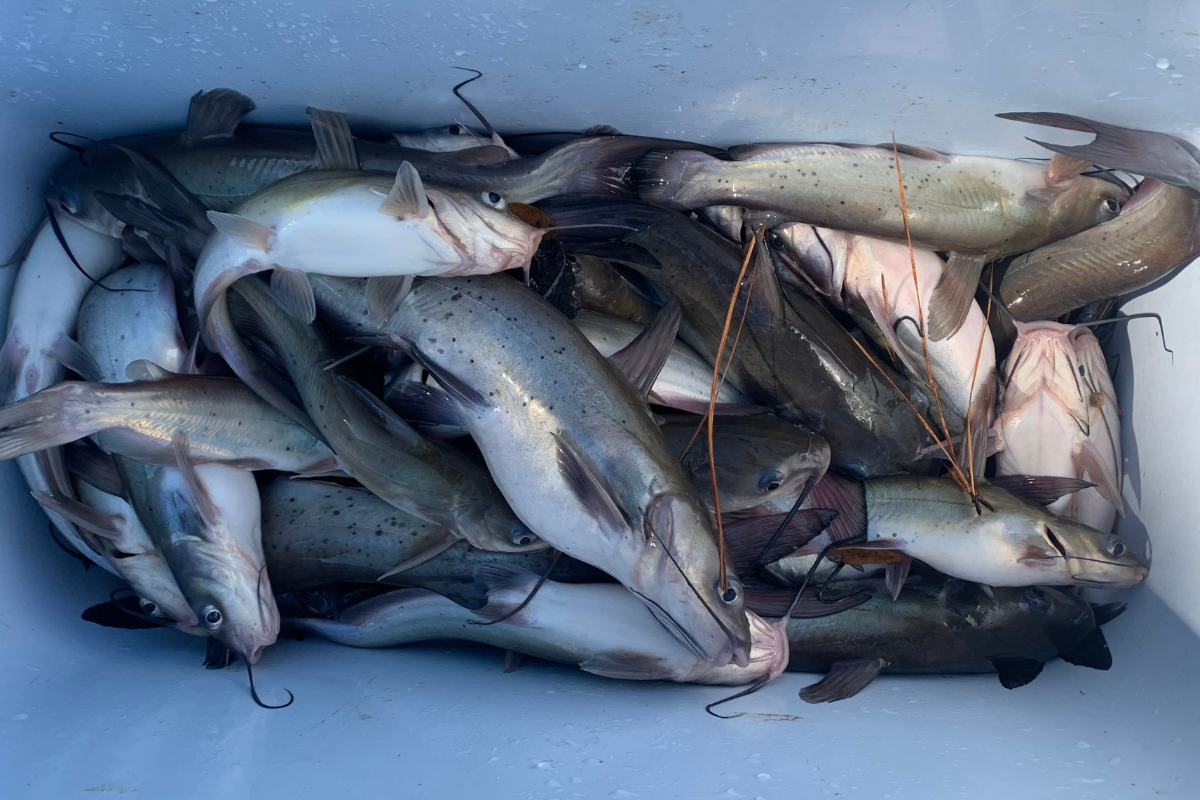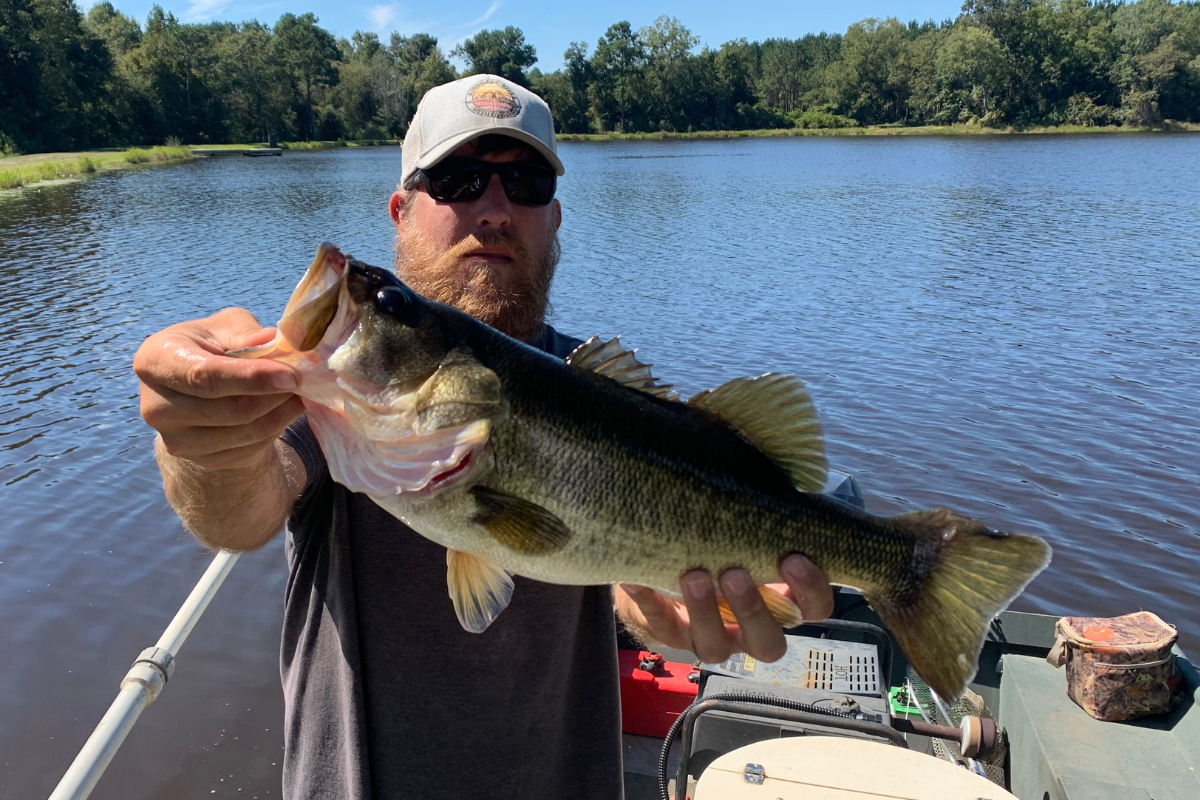We often get calls from pond owners wondering if their catfish population is affecting the bass population in their pond. This is usually the case when a pond owner is wanting the best of both worlds — a dense channel catfish population for an easy meal, and a solid largemouth bass population for sportfishing. Can these two fish species co-exist in the same pond with a healthy population of each? Below we’ll discuss why it might be difficult to maintain a healthy catfish population and a healthy largemouth bass population in the same pond.
Do You Want a Catfish Population in Your Pond?
Catfish are a popular species for stocking smaller (1-10 acres) farm ponds for many reasons. They’re relatively inexpensive to stock in large quantities and their survival rate is usually pretty high when stocked in a new pond with few predators. They’re relatively easy to catch and are a desirable food source, especially here in the southern states. Additionally, a catfish population will usually grow pretty fast when fed well.

Predators vs Scavengers
Many pond owners believe that there are no competition issues between catfish and bass because their feeding styles are so different. Largemouth bass are predators that ambush and stalk their prey. They’ll camouflage themselves in brush piles or vegetative structure and wait for prey to get close enough to strike. This helps them reduce the amount of energy they would use as opposed to chasing a prey fish through open water.
Catfish are scavengers that usually feed on dead fish or other decaying matter at the bottom of the pond. They use their whiskers to detect scents in the water, and that scent detection makes it easy for them to find food on the bottom. The difference in these two prey capture strategies makes it seem like there would be no competition issues between the catfish population and the largemouth bass. But here’s the problem.
As catfish grow larger, their food needs increase. As such, they will begin to eat more fish to fulfill their dietary needs. This is especially the case with catfish that are 5 lbs or more. These larger individuals in the catfish population will feed on bluegill and other prey species that are typically targeted by largemouth bass. They can also compete with bluegill for forage as they consume crustaceans and insects.

Can You Make it Work?
It’s definitely possible to have a catfish population and largemouth bass in the same pond as long as you understand each species and manage them appropriately. If you insist on having both species in your pond, choose a species of catfish that doesn’t get as large. Channel catfish are probably more ideal than something like a blue catfish which can get huge and consume a significant amount of fish along the way.
Another solid management strategy would be to harvest all the larger catfish in the pond. Keep everything you catch that’s a few pounds or more. This will help to ensure that the catfish in the pond don’t get too large and start to compromise the prey populations of the largemouth bass.
You can also supplement the catfish with pelleted food. Feeding the catfish on a regular basis will tend to make them lazy. This will make them less likely to try and eat the bluegill and other smaller fish in the pond. Keep their bellies full with regular feedings and their impact on prey populations should be lessened.
Pond size is also going to be a significant factor here. The smaller the pond, the less likely both populations can co-exist at healthy levels. If your pond is only a few acres, you might need to make the decision to have a catfish pond or a bass pond. If your pond is 20 acres or more, it’s possible that solid management practices will allow you to have both.
The Most Ideal Situation
As discussed above, it is possible to have a healthy catfish and largemouth bass population in a pond. But it’s not ideal and will require constant management over time. The most ideal situation would be to choose whether you want a productive food fishery with catfish, or if you want a sportfishing pond with a healthy population of largemouth bass and bluegill.
This is an important decision to make before stocking a new pond. If you stock a pond full of catfish, it may be tough to later create a healthy largemouth bass fishery. We have had some success doing large-scale catfish removals via electrofishing, but there’s no way to guarantee that we get them all. As such, repeated efforts to remove the catfish would be required.
If you have enough land for multiple ponds, the most ideal solution would be to build a smaller pond for catfish and a larger pond for the bass and bluegill. This way you get the best of both worlds, but you keep the populations from competing with one another. You can have your cake and eat it too!


